Orbit
An orbit is the path that an object follows as it moves around another object in space due to gravity. This concept is fundamental in understanding the motion of celestial bodies such as planets, moons, and artificial satellites.
Key Concepts
- Gravity: The force of attraction between two objects, such as a planet and a satellite, that causes them to orbit each other.
- Circular vs. Elliptical Orbits: Orbits can be circular (perfectly round) or elliptical (oval-shaped) depending on the initial conditions and the gravitational forces involved.
- Kepler's Laws: Johannes Kepler formulated three laws of planetary motion that describe the orbital dynamics of planets around the Sun.
- Orbital Period: The time it takes for an object to complete one full orbit around another object.
- Orbital Velocity: The velocity required for an object to maintain a stable orbit around another object, typically determined by the balance between gravitational force and centrifugal force.
Study Guide
- Define orbit and explain the role of gravity in maintaining an orbit.
- Compare and contrast circular and elliptical orbits, providing examples of celestial bodies in each type of orbit.
- Describe Kepler's laws of planetary motion and their significance in understanding orbits.
- Calculate the orbital period and orbital velocity of a satellite orbiting Earth, given relevant data such as the satellite's altitude and Earth's radius.
- Discuss the factors that can influence an object's orbit, including mass, distance, and velocity.
◂Biology Worksheets and Study Guides High School. Invertebrates
Worksheet/Answer key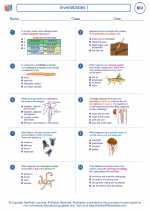 Invertebrates I
Invertebrates I  Worksheet/Answer key
Worksheet/Answer key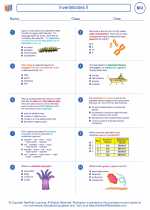 Invertebrates II
Invertebrates II  Worksheet/Answer key
Worksheet/Answer key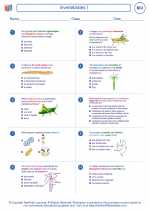 Invertebrates I
Invertebrates I  Worksheet/Answer key
Worksheet/Answer key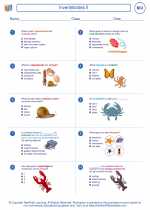 Invertebrates II
Invertebrates II  Worksheet/Answer key
Worksheet/Answer key Invertebrates I
Invertebrates I  Worksheet/Answer key
Worksheet/Answer key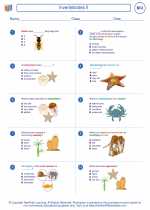 Invertebrates II
Invertebrates II  Vocabulary/Answer key
Vocabulary/Answer key Invertebrates I
Invertebrates I  Vocabulary/Answer key
Vocabulary/Answer key Invertebrates I
Invertebrates I  Vocabulary/Answer key
Vocabulary/Answer key Invertebrates I
Invertebrates I 

 Worksheet/Answer key
Worksheet/Answer key
 Worksheet/Answer key
Worksheet/Answer key
 Worksheet/Answer key
Worksheet/Answer key
 Worksheet/Answer key
Worksheet/Answer key
 Worksheet/Answer key
Worksheet/Answer key
 Vocabulary/Answer key
Vocabulary/Answer key
 Vocabulary/Answer key
Vocabulary/Answer key
 Vocabulary/Answer key
Vocabulary/Answer key

The resources above cover the following skills:
Concepts of Life Science (SC1, SC2, SC3)
The student demonstrates an understanding of the structure, function, behavior, development, life cycles, and diversity of living organisms by describing the structure-function relationship